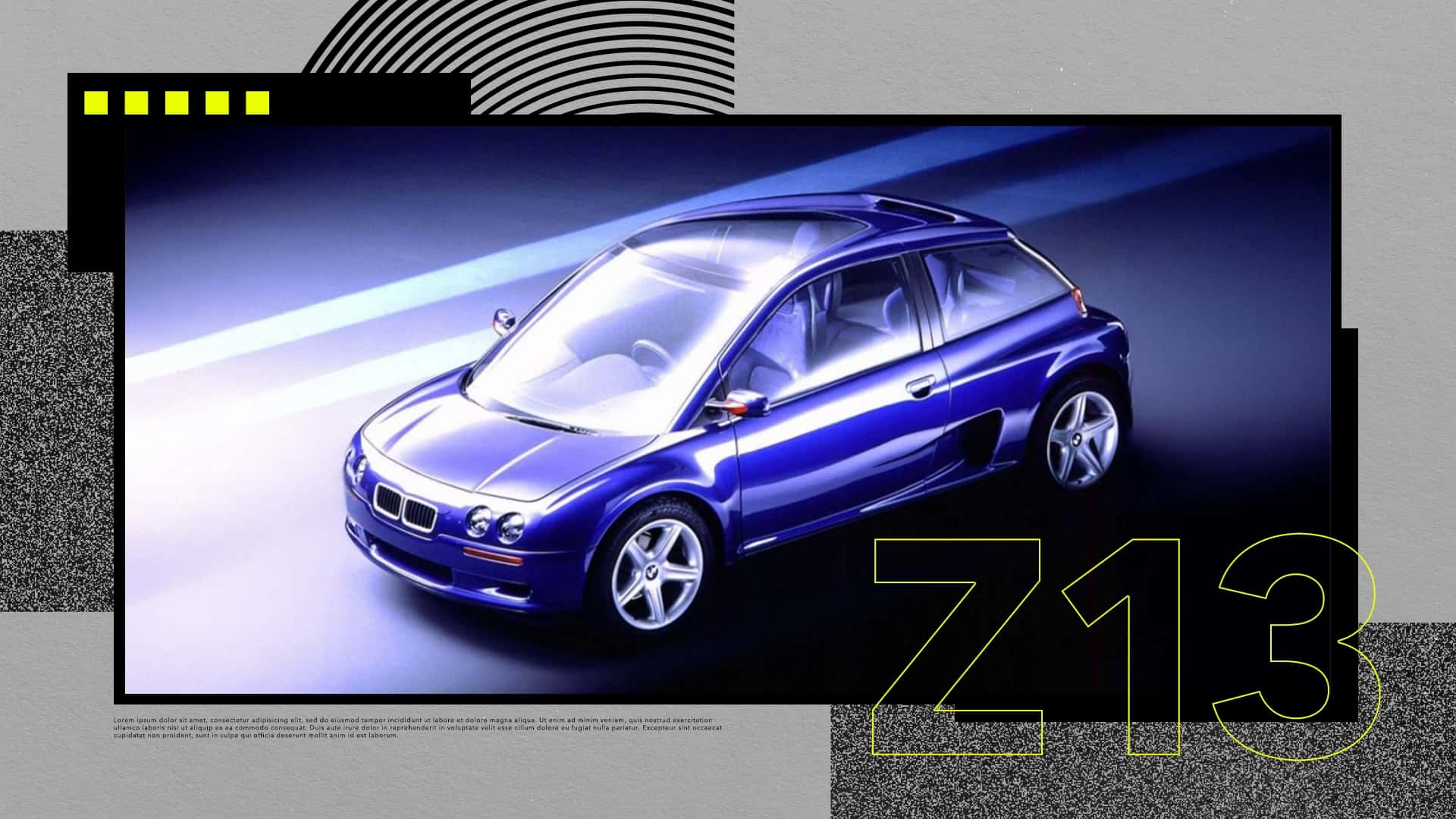If you are following Motor1 From the first days of the site, you may remember a long period of life We have forgotten the concept series. I decided to return it and aim to improve it by taking deeper diving in some of the most strange concepts that have crossed Radari over the years. A good starting point is: 1993 BMW Z13. There is more than this Bavarian city car more than its strange look, which is enough to ensure a closer look at the small hatchback.
The Z13, which dealt with the car, dealt with a reduction in the BMW format to only 135.4 inches. For context, weird I3 electric hatchback It was longer than 22 inches complete. Despite its small imprint, the concept had enough space for three people in the McLaren F1 design, with a central driver’s seat and a pair of passenger seats that were installed away on each side. All this was possible in the car with only 64.5 inches.
Smart packaging included the engine installation in the depth, just before the axis. While the idea of a medium -engine hatchback may evoke performance cars ideas such as Renault Clio V6 or the latest Toyota Gr Yaris M ConceptZ13 was far from the hot hole. I used a naturally inhaled phase of BMW K1100 motorcycle.
With only 82 hp and 81 pounds of torque, not setting your pulse race. The fact that it appeared constantly variable transmission (CVT), believed to have been obtained from FordIt also did not help. Although BMMER was not a typical Bimmer, it remained a reality of BMW’s rear traditions.
Z13 needed about 10 seconds to reach 62 miles per hour (100 km/h) and topped at 112 miles per hour. But that was completely sufficient for a car mainly designed to use the city instead Norburgring Lab Husts times. The idea was not to create a performance car, but providing a solution to people who are driving alone and do not need a series 3, not to mention a larger car. Here is what prompted BMW to create what could become a model for beginners if it reached production:
“To design a built -in vehicle suitable for modern needs, with active and ideal negative integrity, a high level of comfort and comfort, and convincing performance with acceptable and environmental acceptable economy, but also fun in driving and elegant but restricted in its appearance.”
To increase the interior space while maintaining a compact car, BMW The wheelbase extended to 90.5 inches, expanding tracks, and lower the accumulated parts as possible. Its weight is only 1,829 pounds, the economy in fuel consumption should be exceptional. The Z13 was built around the improved computer space frame and the cloud laboratory was 0.34, which is a great number for its time.
Install a 16 -inch bars and distinctive air entrances before the rear wheels to cool the engine and brake. Despite its unconventional appearance, the Z13 shadow can be recognized immediately as a BMW, with the kidney patient surrounded by double headlights. Designers aim to give him a mature appearance, even if it is as an apartment.
While the borrowed external signals of traditional BMW models, the interior was not less than revolutionary. Behind the central leadership position, the cabin was characterized by many innovations. CVT has been controlled via a roundabout to the right of the steering wheel, while the mobility bid and a built -in phone were placed on the left. She even had a Telefax machine on the plane, along with an enlarged sound installed between the rear seats.
The heat tampering glass extended to the surface, making the cabin feel more spacious. Back travelers had arms supporters and reading lights installed on doors, designed to reduce the disorder to the driver. Folding the side seats led to a space of 6.5 feet (2 meters). With the rear seats in a straight position and the absence of anterior passengers, passengers can “extend their legs to an extent that cannot be considered a foregone in some large luxury cars.”
BMW did not cut the angles to safety either. The driver had a pillow, and it provides the Z13 frame with the large members of the two interruptions and the thick bi -bacteria. Without a front engine, engineers had more freedom to increase the wrinkle area to the maximum. Computer simulations in the early 1990s showed that Z13 Met “is the most difficult car safety standards in the world.”
Z13 was the third car (after Z1 Roadster And E1 ELCTRIC HATCHBACK) was developed by BMW Technik GmbH, a fully -owned subsidiary company founded in 1985. Basically SkungWorks section, Technik produced many innovative concepts from the late eighties to early 2000. BMW Forschung und Technik was renamed GmbH in 2003 continues to focus on research and development to this day.
At that time, BMW confirmed that Z13 was “not just an artistic Guinea for experimental purposes, but a vision can easily turn into reality.” A second initial model appeared in 1994, where this time it features a five -speed manual gearbox and a larger 1.2 -liter engine of K1200 motorcycle. However, the city car did not reach production. Why? Later in the same year, BMW got small brand rights, and the rest is the date.



